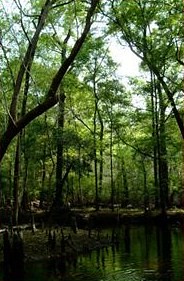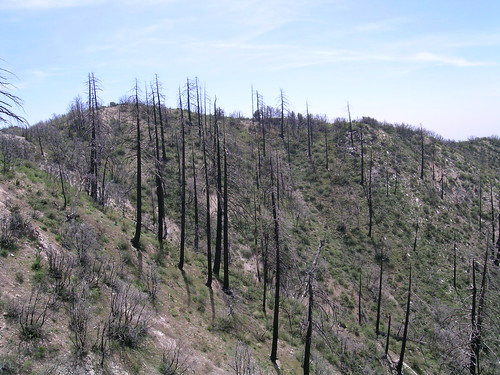One need not be an environmentalist to be concerned about the survival of the species on the planet. Think of the farmers in China, who must now pay for their apple trees are pollinated because there are not enough bees. And not just bees that are declining. As a direct result of human activity, species are becoming extinct at a rate a thousand times higher than considered natural. Ecosystems are suffering too. 20% of coral reefs have been destroyed in recent decades and another 20% is seriously threatened. The statistics concern all, because we are all we will end up footing the bill.

Photography by U.S. Army Environmental Command
The true cost:
For the first time in history is quantifying the cost of biodiversity degradation. The cost of damage caused by human activity to the environment in 2008 was between U.S. $ 2 billion and $ 4.5 billion, according to recent United Nations Program for Environment, entitled «The Economics of Ecosystems and Biodiversity «(TEEB, for its acronym in English). The smaller of the two figures is equivalent to the entire annual production in the UK or Italy.
A second study, also for the UN, estimated to cost even more. Trucost consultancy specializing in business and the environment, estimates that the amount is U.S. $ 6.6 billion, or about 11% of global economic output. These figures are of course estimates. There is no exact science to measure human impact on the environment, but studies make clear that the destruction of ecosystems poses a serious risk to the global economy.
Deforested area:
to why the world is waking up to the cost of degradation is that until now, nobody had to pay for it. Both companies and individuals for a long time operated with the assumption that resources were infinite, but are not. And just when calculating how much it costs to protect or replace it becomes clear how vital they are to the global economy. In some cases, the link is obvious. For example, it requires water for the crops that feed us. Fish provide a sixth of the protein consumed by mankind.

Photography by USFS Region 5
In other cases, the links do not jump at a glance. The reefs are a natural barrier that protects the coast against devastating storms, the plants provide the material for life-saving drugs, and insects are responsible for pollinating many of the most productive crops.
The case of bees:
The interconnections are complex, but it is sometimes possible to estimate its economic value. In the United States in 2007, for example, the cost to farmers of collapse in the number of bees was U.S. $ 15,000 million, according to the Department of Agriculture in that country.
The 1998 floods in China killed more than four thousand people, displaced millions and caused losses estimated at U.S. $ 30,000 million. The Chinese government recognized that the indiscriminate cutting of trees in the five previous decades had dramatically reduced the flood protection and banned logging in the area. Forest Research Centre estimates that in the 50 years prior to the ban, logging cost the Chinese economy about U.S. $ 12,000 million a year.
Biodiversity:
Biodiversity loss has an impact especially on the poorest. The uses of hundreds of millions of people depend on fishing, agriculture and forests for fuel. «Biodiversity is valuable for everyone, but absolutely essential for the poor,» said Paven Sukhdev, a banker and an author of the TEEB.
Natural resources and the services they provide contribute 75% of all production in Indonesia and 50% of production in India, according to the TEEB. Not only will the poorest that suffer. The companies will be increasingly affected, having to replace ecosystem services traditionally offered at no cost or pay new taxes to finance the preservation of the environment. And this adds to the cost generated by natural disasters more frequent.
The environmental damage caused by the world’s leading 3,000 companies in 2008 was $ 2.15 billion, about one third of their combined profits, estimates Trucost. These estimates, but the scale of the cost they will face companies for environmental damage can not be ignored. Deforestation exacerbates the devastating impact of floods.

Photography by Ken Lund
Pensions:
Higher costs for companies mean higher prices for consumers. Floods in China and Pakistan this year made the cotton reached its highest price in 15 years. In the UK clothing companies such as Next, Primark and H & M warned that they should raise their prices.
Consumers not only have to pay higher prices. According to Trucost, the profits of major companies will be affected and the cost of the shares will fall. It is on these companies, in fact, invested by pension funds, so that could be affected the amounts of pensions of millions of people. The cost of the ongoing degradation of Earth’s natural resources will be paid by all, environmentalists or not.
Take care of the world, it is your home!
Leave a Reply
You must be logged in to post a comment.
Recent Comments